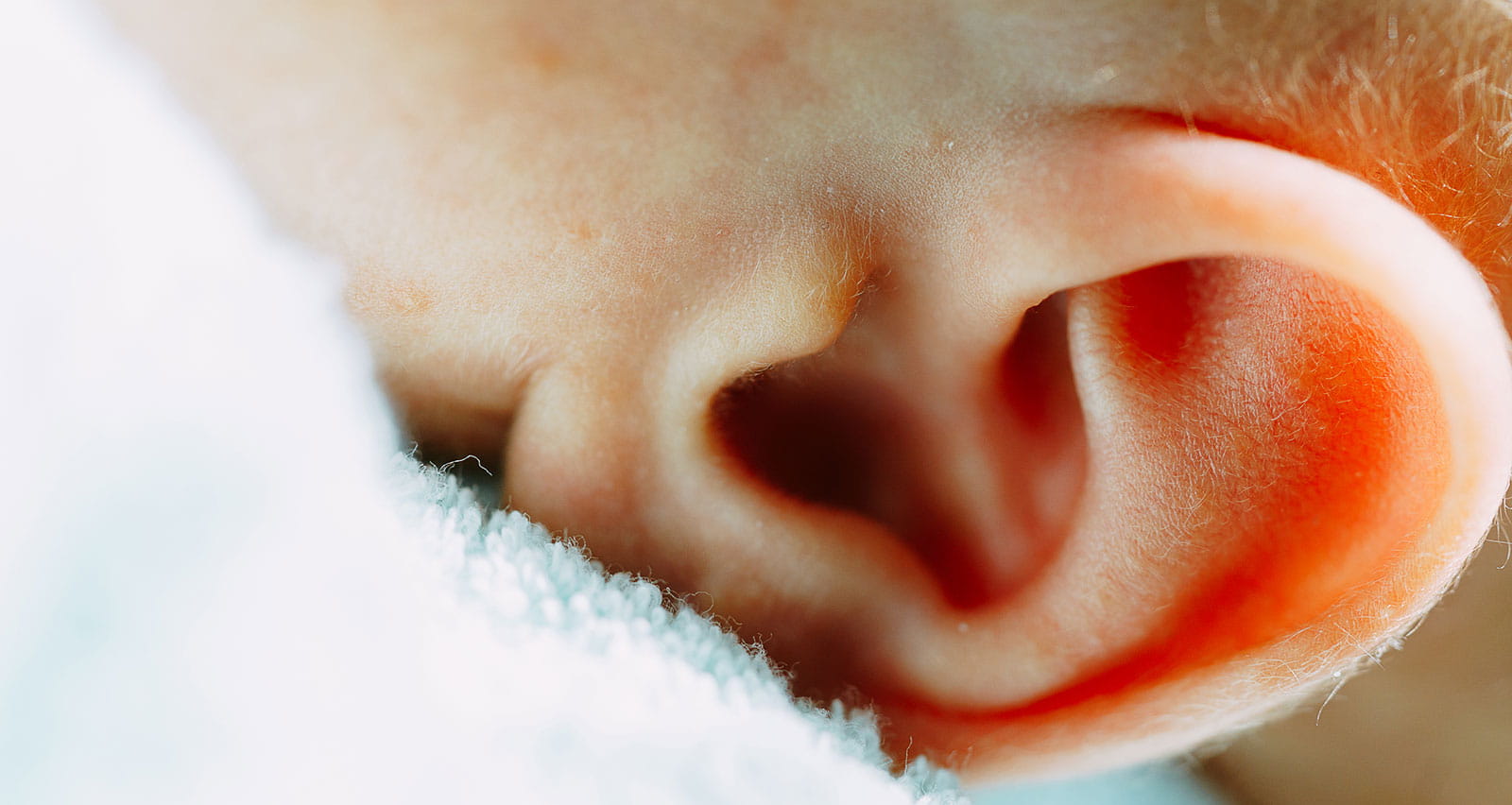
Newborn Ear Molding
Ear molding reshapes and corrects deformities of the outer ear in very young babies. The procedure is noninvasive, low risk and can permanently restore the natural shape of the outer ear if performed in an infant’s first weeks of life.
The facial plastic surgeons at University Hospitals Ear, Nose & Throat Institute have the advanced training and expertise to evaluate and treat ear deformities in newborns with excellent results.
Make an Appointment
To schedule a consultation with a UH facial plastic surgeon. call 440-446-8600.
Find a UH Facial Plastic SurgeonConditions That Can Be Corrected Using Ear Molding
Newborn ear molding may be used to correct protruding or asymmetrical ears, as well as congenital deformities, including:
- Cryptotia. A condition where the upper part of the ear is present but attached to skin on the side of the head, making the ear look misshapen or incomplete.
- Stahl’s Ear. A deformity caused by misshapen cartilage that results in a pointed ear shape.
- Cup Ears. Also known as constricted or lop ears, this is a deformity that occurs when the outer rim of the ear is folded over and/or wrinkled. It may be caused by a shortage of skin or cartilage.
- Helical Rim Deformity. A condition in which the outer edge of the ear is flattened or uneven. It can be caused by a congenital deficiency of skin or cartilage or by alcohol and drugs use during pregnancy.
Ear molding has excellent success rates in restoring the appearance of the ear when any of these congenital conditions are present. It is not an appropriate treatment if any ear structures are missing. Infants with missing ear structures will usually require surgical correction later in life.
When Should Ear Molding Treatment Begin?
Ear Molding for Newborns Has Many Benefits
Newborn ear molding can have significant psychological and social benefits as the child grows.
Read MoreIn the first weeks of life, an infant’s ear cartilage is soft and pliable due to high levels of maternal estrogen. By six weeks of age, estrogen levels normalize and the ears become more rigid and less pliable. Therefore, ear molding results are most successful when the treatment begins no later than 2 – 4 weeks of age.
After three months of age, the procedure is unlikely to have the desired effect and is not typically recommended. Surgical correction may be considered when the child is older.
A Safe, Noninvasive Procedure
An infant who is determined to be a good candidate for ear molding will be fitted with a non-surgical molding appliance that is worn continuously for 2-3 weeks. Depending on the results, the process may be repeated. Typically, the earlier treatment starts, the shorter the duration of treatment.
Ear molding is painless, with a risk of minor skin irritation from the molding appliance.
Make an Appointment
Schedule a consultation with a UH facial plastic surgeon.


